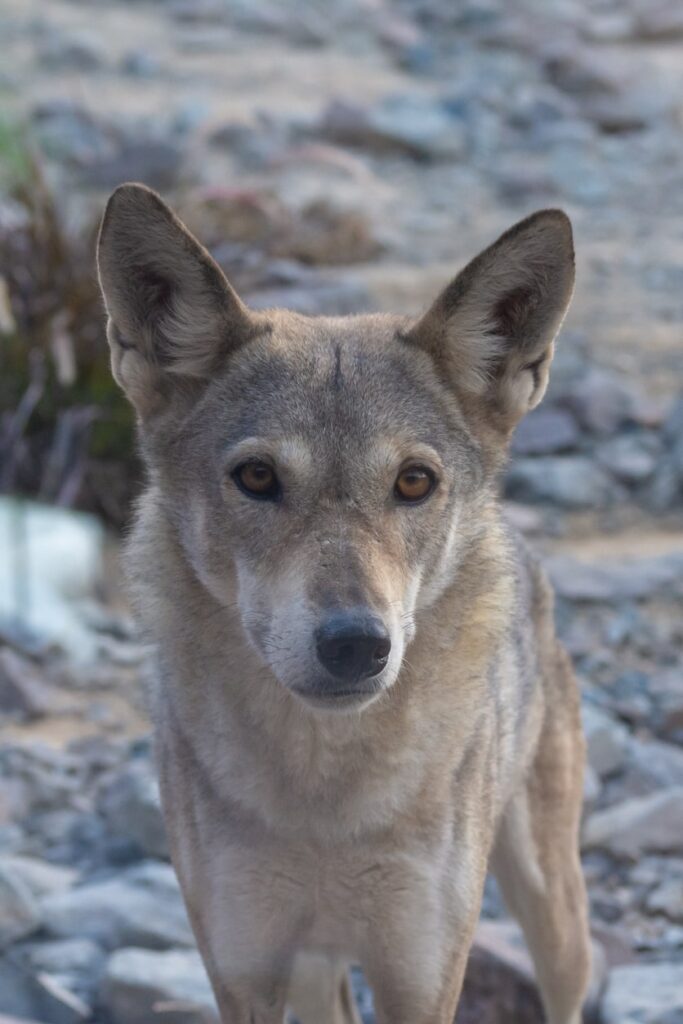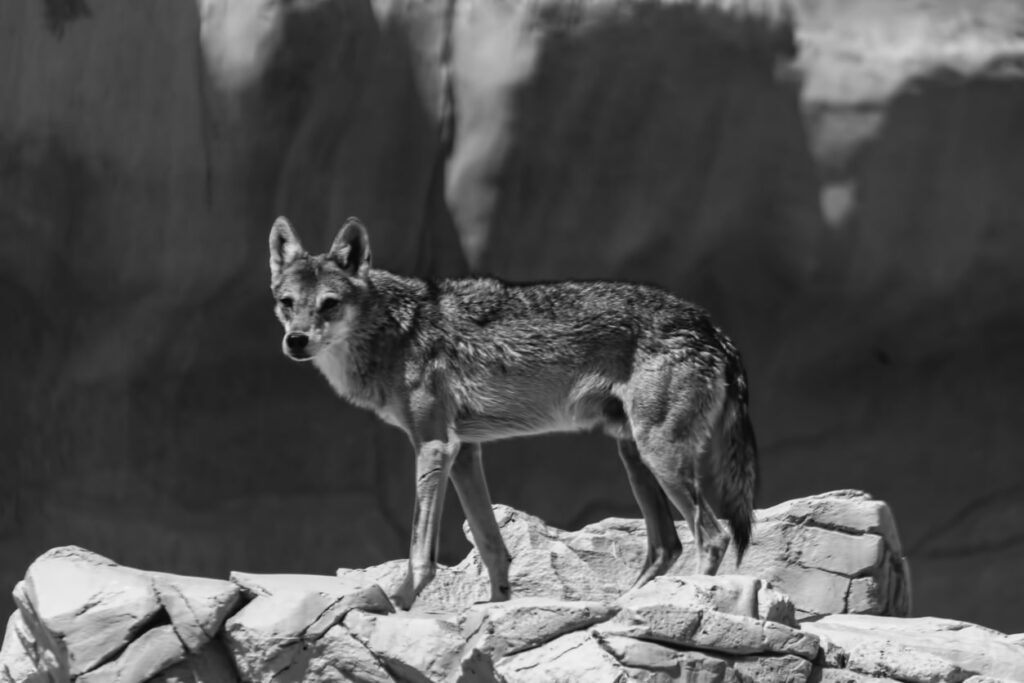The Arabian wolf, also known as the desert wolf and Canis lupus Arabs, resides in southern and western Iraq, Jordan, Saudi Arabia, Yemen, Oman, and small parts of the Sinai Peninsula and southern Israel.
Hostile human interactions have taken a toll on the Arabian wolf. Although some countries like Oman, the UAE, Israel, and Saudi Arabia have banned the hunting of the Arabian wolf or set protections for it in place, Arabian wolves are still rare and sometimes killed in conflicts with humans.

Arabian wolf description.
The Arabian wolf has a body made for living in the desert. Its coat is short and thin and has a pale, sandy yellowish-brown color.
The Arabian wolf averages about 2 feet high at the shoulder and weighs 45 pounds. As a subspecies of the gray wolf, this is tiny compared to the Timber wolf and the Mackenzie Valley wolf. The Arabian wolf’s height and weight make it more like a coyote in size than a wolf.
The Arabian wolf’s size is the evolutionary product of the dry, hot climate it inhabits. Indeed, even the Arabian wolf’s ears are overly large for a wolf its size, no doubt facilitating the dispersal of body heat (compared to the tiny ears of the Arctic wolf).
Like all canines, the Arabian wolf controls its body temperature by evaporating moisture from its lungs through constant panting of the tongue.
Diet of Arabian wolves.
Arabian wolves are carnivores. They prey upon reptiles, rodents, insects, hares, and foxes, as well as larger prey like ibexes and Ariel gazelle. However, like suburban coyotes, those who inhabit areas of human populations occasionally feast on garbage, small pets, and pet food.
The frequent consumption of human garbage by wolves in the United States is rare. However, the Arabian wolf is habituated to the presence of humans and learned to take advantage of their proximity and disposal routines.
Arabian wolves constantly visit the carrion pits and dump sites used to dispose of dead livestock. However, Arabian wolves visiting these sites often find sufficient food to forgo attacks on living goats and other domesticated animals.
Arabian wolves prey on rabbits, carrion, and rodents in the wild. When operating in small packs, they will also attack the livestock of farmers and Bedouins. These attacks sometimes result in shootings of Arabian wolves, despite the banning and other protections.

Desert wolf: Family and social structure.
Unlike other wolves, desert wolves live in small packs averaging about three members (typically one female and two males).
Interestingly, the Arabia wolf spends so much of its time alone that it rarely howls. And, outside of the pup-rearing season, Arabian wolves do not mark and defend their territory.
Arabian wolves breed from October to December. Like most canines, the pups are born after a 63-day gestation period in litters averaging about three pups.
While the litter size may appear small, most desert-dwelling animals produce only one offspring with each litter to ensure the survival of the mother and offspring in the desert climate.
When is the Arabian wolf most active?
Due to the desert climate, Arabian wolves are most active at night. During the day, they take shelter in shaded areas like large rocks, caves, and thick bushes. After the sun has started to set in the later afternoon, they will begin to forage until early morning.


